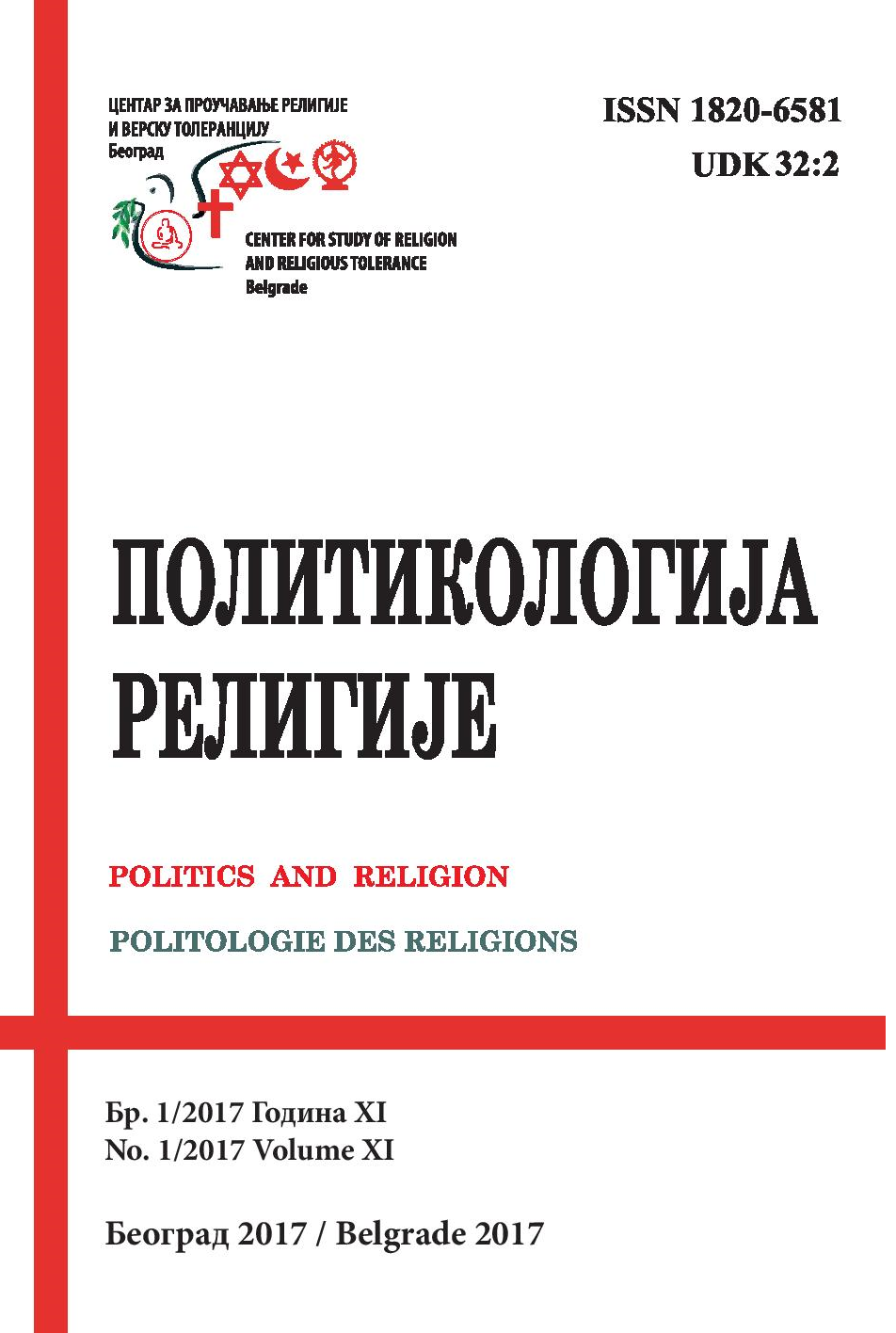
“A Vigilant Society. Jewish Thought and the State in Medieval Spain”
“A VIGILANT SOCIETY. JEWISH THOUGHT AND THE STATE IN MEDIEVAL SPAIN” State University of New York Press, Albany, NY, 2013, pp. 326, ISBN-13: 978-1-4384-4563-2
More...We kindly inform you that, as long as the subject affiliation of our 300.000+ articles is in progress, you might get unsufficient or no results on your third level or second level search. In this case, please broaden your search criteria.

“A VIGILANT SOCIETY. JEWISH THOUGHT AND THE STATE IN MEDIEVAL SPAIN” State University of New York Press, Albany, NY, 2013, pp. 326, ISBN-13: 978-1-4384-4563-2
More...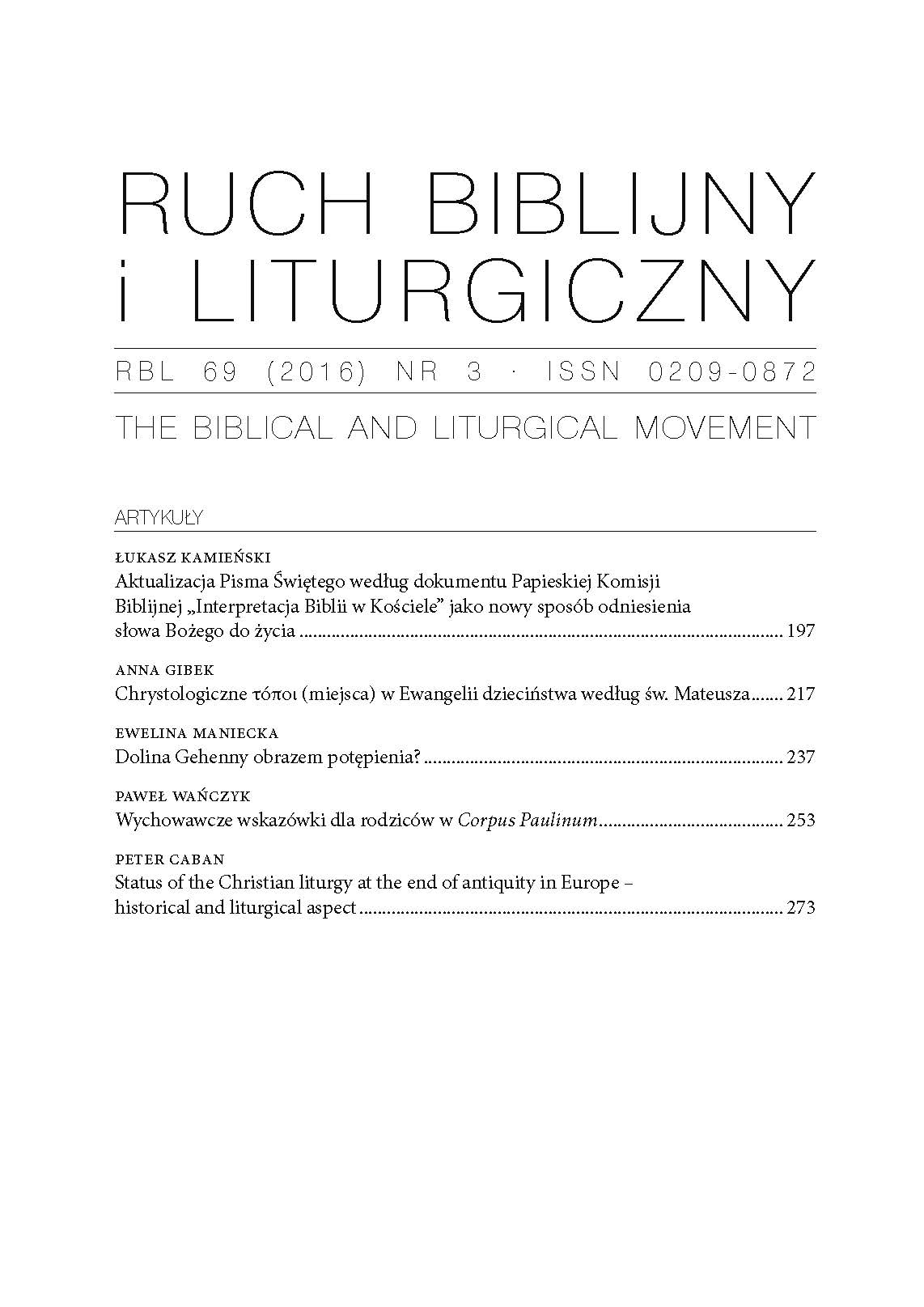

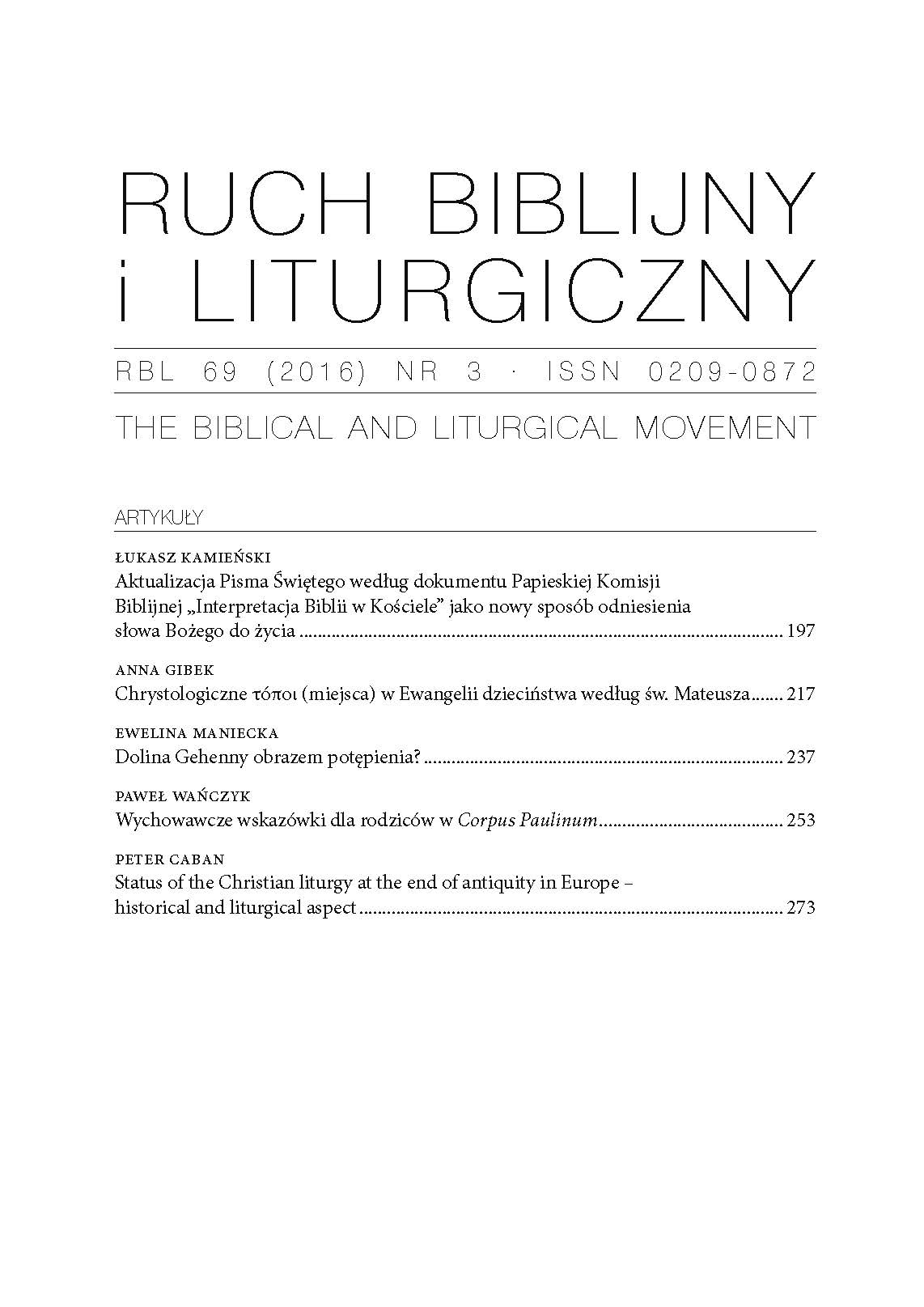

During the last decades, scholars have paid more and more attention to the relationship between the biblical Wisdom tradition and other cultures outside the Ancient Near East. This article represents the first attempt to compare the proverbs of the Viet people in the Far East with the sentences in Wisdom of Sirach, a collection of instructions and maxims in ancient Israel. Such a comparison shows some similarities in content between biblical maxims and Vietnamese folklore sayings, especially in what concerns family relationship and varied aspects of daily life wisdom. The research offers ground for further theological reflections and exploration on the issue of divine inspiration in non-biblical cultures as well as the inculturation of the Bible in a non-Christian environment like Vietnam.
More...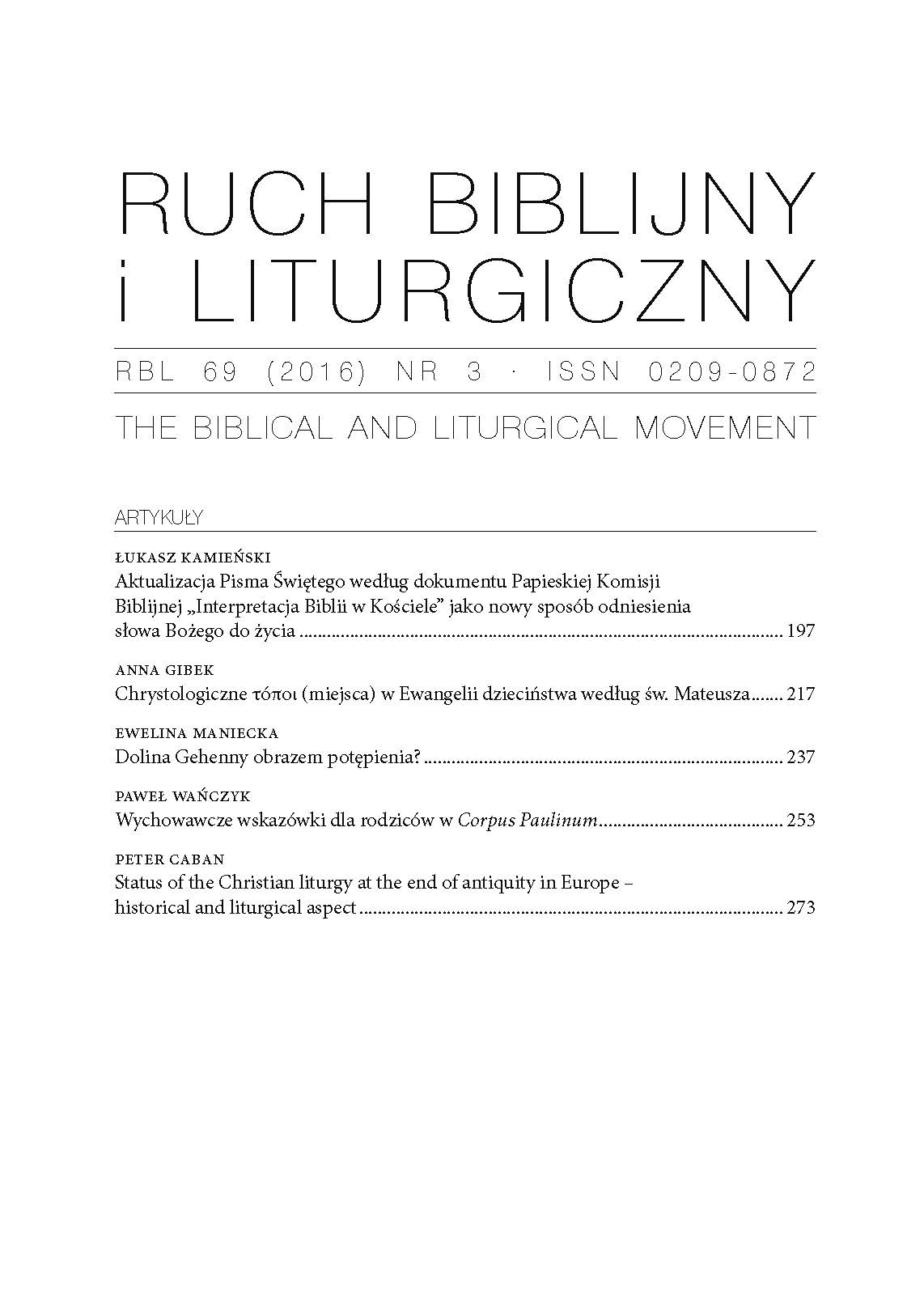
Of some three hundred literary texts found in the caves of the Judaean Desert and those close to Khirbet Qumran, 56 are various pieces of poetry and liturgy. Seven specific groups have been distinguished among them: 1. Liturgy on sunshine and sunset and on specific days; 2. Liturgy on specific ceremonies of the community; 3. Eschatological prayers; 4. Magic texts; 5. Collections of psalms (including pseudepigrapha); 6. Thanksgiving hymns; 7. Prose prayers. The issue of how the Qumranians were praying is here briefly touched upon. Then there is a description of morning and evening prayers, Sabbath prayers, specific liturgy of the annual ceremony of entering the New Covenant, the Hodayot (Thanksgiving Hymns), pseudepigraphic Psalms (like Ps 151), and the eschatological prayers. The introduction ends with a summary evaluation of the role of the texts in reconstructing the historical development of the Jewish prayer of the late Second Temple period. The need to study the relationship of the Qumran prayers with the early Christian prayers is also briefly discussed.
More...
We don’t get to know from Isaiah’s songs, who is the Servant of Yahwe. In Synoptic Gospels quotations are contained from the first and fourth songs about the Servant of Yahweh. Synopticians interpreted in a new way Old Testament texts in light of Christs resurrection. They see prophetic announcement and the same type of Jesus Christ, Messiah and Saviour in Isaiah’s Servant. In Jesus Christ is filled out in a perfect and final way everything the Old Testament has announced about the Servant of Yahweh. The evangelical context of these quotations allows one to see in the suffering of the Servant of God, announcement of the redemptive fatigue, death and resurrection of Jesus.
More...
This article is the first part of a longer essay, which is divided into two parts. The Book of Wisdom is a special book in the Bible. It is the youngest book of the Old Testament, but Canon Muratori enlists it among the New Testament books. Many manuscripts and old translations call this book the Wisdom of Salomonos, because Salomon seemed to be the author of this work (cf. Wis 7–9). Strong arguments exclude his authorship, but it is sure, that an Israelite must have been the author. Although there are many hypotheses about the date of its birth, Sitz im Leben and the wording defend the view that the text must have been written while the Romans ruled in Egypt.
More...
The institution of Synagogue and the synagogue as the local zone of Jewish activities served three basic functions: socio-cultural, religious and educational. The origins of the Synagogue is dated differently depending on research environment: from reforms of Josiah till the Hasmonean period. Extreme opinions represent the pessimistic approach concluding that this is impossible to clearly establish the genesis of the institution of the Synagogue. The synagogue was born in the deportation environment of Babylonia with the main goal of preserving the ethnic and religious identity. It had liturgical, social, juridical and educative functions. It developed quickly in the Egyptian Diaspora during the Ptolemaic period and during the Roman rule. In Palestine the development was different. Institutional capacity of the Synagogue was realized in the activities of local synagogues in sacral, social, pedagogical and political context.
More...
The text regards a polemic against Geza Vermes, an Jewish scholar, which was translated into Polish and was entitled Twarze Jezusa (Kraków 2008) presented the historical Jesus as a Palestinian charismatic healer and a teacher of simple religiosity. The first disciples of Jesus transferred his message from its Semitic context to the primarily Greek-speaking pagan Mediterranean world where shortly after he became a divine figure. Beginning with the divine figure of Christ presented in the most recent Gospel, namely the Gospel of John, Geza Vermes goes successively back to earlier accounts of the New Testament in order to reveal finally the allegedly true figure of Jesus hidden beneath the oldest Gospels. In the opinion of Marek Skierkowski the method used by Geza Vermes is not adequate and therefore it leads to so false conclusions.
More...

The Jewish feast of Pesah was born in the circle of the shepherds’ culture, more precisely in the Semitic seminomadic groups. It was being celebrated during the spring, at the beginning of a new year. During the time of Josiah’s reforms, it became a pilgrimage feast. Historical experience of the exodus from Egypt and its theological interpretation and several reinterpretations coming afterwards, changed that nomadic and shepherds’ feast, connected with agricultural feast of Unleavened Bread, into the most important national feast of Israel. Calendars coming from biblical texts are showing a multistage development of actual feast of Passover.
More...
The present article points out some liturgical implications which proceed from the unity between the Liturgy of the Word and the Liturgy of the Eucharist in the Mass. To better understand this unity, an etymological analysis of certain Hebrew terms in the Masoretic Text is provided. Such an analysis helps us understand the relationship between the two aspects of the one Word of God, as the Word uttered by the Father and as the Word made flesh. A proper awareness of this relationship leads to an enhanced understanding of the Mass in accord with the Church’s teaching about the Eucharist.
More...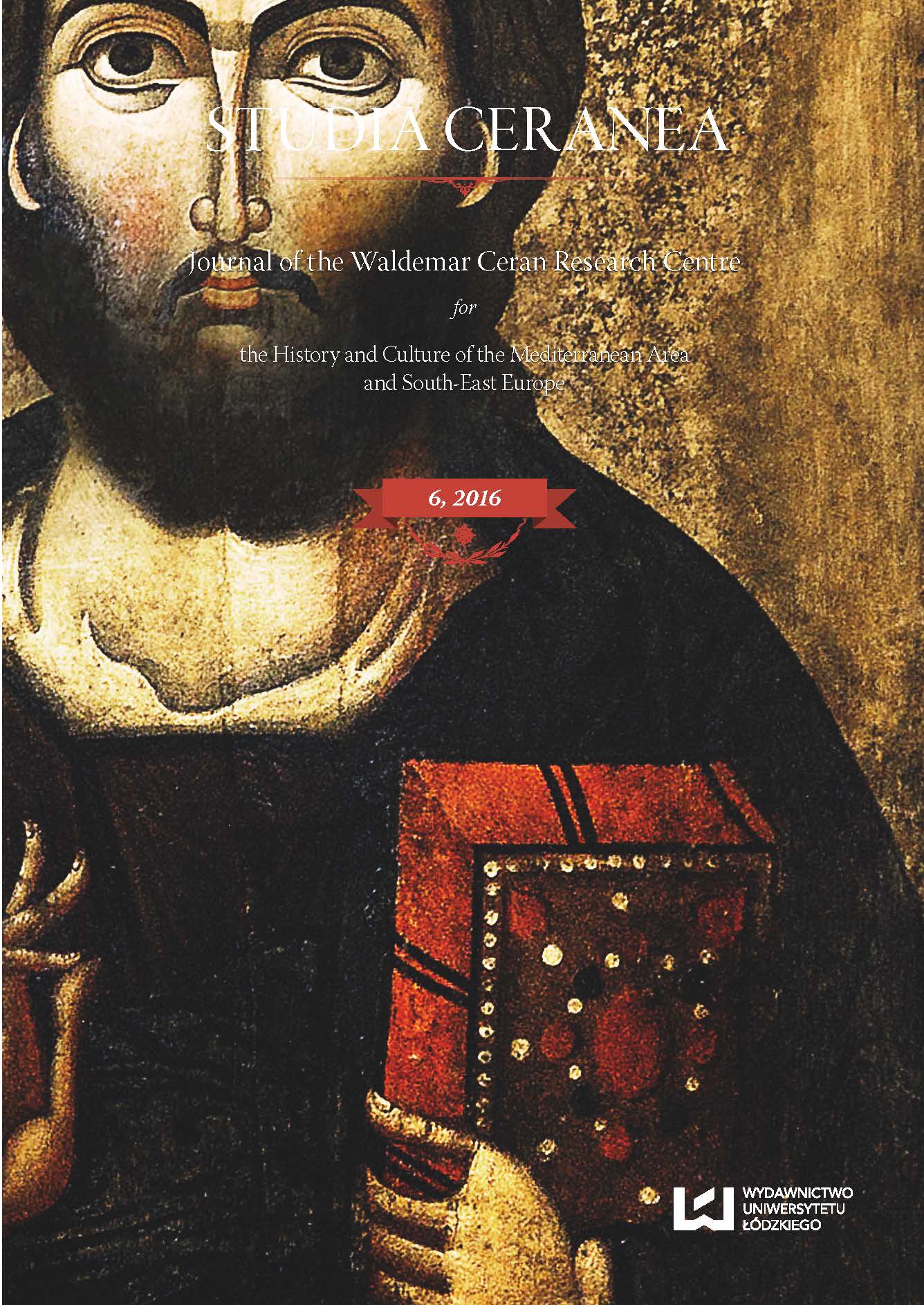
The authors study different equivalents of the Hebrew word Eden in selected old and new Slavic translations of the Bible. The equivalents of this lexeme have been excerpted from several Slavic translations of the Bible, which were selected on the basis of diverse criteria. The translations are presented chronologically and old translations are opposed to the new ones. They represent three groups of Slavic languages: West Slavic, East Slavic and South Slavic and are connected with the base of translation, i.e. the original text and/or Greek or Latin text. They can also be classified according to religious denomination and the strategy of the translation.The observation of those equivalents enables us to see not only their variety and mutual influence among translations but also the struggle of Slavic translators with a very difficult language matter. Many factors were important in that struggle: genetic and structural distances between Semitic and Slavic languages, different perceptions of reality in distant cultures, the discrepancy between biblical and Slavonic realities and the influence of religious denomination. Another important factor was the state of biblical knowledge at the time – incomparably poorer in the case of the oldest Slavic translations in comparison to modern ones.
More...
The predictions made by Kraków’s astrologers around the end of the 15th century constitute a treasure trove of information on daily life. One important topic raised in these unique prints were astrological forecasts addressed to various minorities, including Jews. Interestingly, a vast majority of these forecasts were not favourable to the followers of the Judaic faith, which must have been due to the air of ambivalence then pervading the Jews-Christians relations. Therefore the forecasts reflected the public mood then prevailing, the horoscopes produced on a mass scale becoming a weapon in this „propaganda warfare”.
More...
The source materials for the text are Warsaw newspapers of various political hues and local government periodicals. Due to the status of the capital city, the elections to the local government, while overshadowed by the parliamentary elections, were of exceptional importance for the young state. Their results aroused broad interests and elicited commentaries in the press. The author presents chronologically the results of the successive elections and the composition of the special administration, analysing the composition of the council of the city of Warsaw and naming representatives of local Jewish communities elected to that council based on democratic electoral regulations. She also mentions the voting pacts being formed in the local government forum. Special attention was paid to the last election, held in 1938, whose results were favourable to Bund, with quotes from writers interpreting that outcome. Appended to the article is a list of councillors representing Jewish milieux and parties, elected for each term.
More...
Individual and collective violence was an inseparable element of the exercise of power by the Third Reich in the occupied lands in East-Central Europe, both in relation to the Jewish population and other ethnic groups. Despite the that the Reich’s leadership took a lot of effort to create an illusion about the occupation order having the characteristics of the rule of law, the widespread violence applied to the subjugated populations and the Jews in particular meant that any civilizational and cultural norms were broken all the time and the brutalization of daily life proceeded unabated. Violence became an integral part of the system of exercising power, directing and driving the German occupier’s policy toward the Jewish population at all decision-making levels. With its help the German national socialists were building a new system of moral references, justifying the treatment of the hated minority in a manner far exceeding the rules of live in a society upheld so far. From the point of view of the perpetrators themselves this system made it possible to find ever further reaching rationale of their own active involvement in the implementation of that policy, and it convinced them about its indispensability for the success of the Nazi utopia. The use of massive violence ultimately became a sine qua non of the implementation of the utopian final solution of the “Jewish question” through genocide. This was a factor shaping a new system of moral values, cementing the sense of co-dependence of the perpetrators in a peculiarly defined “community of crime,” a vessel making it possible to transform utopian goals of the state into very tangible personal profits. Without the daily use of violence that overcame the still existing psychological barriers and suppressed any internal resistance the Holocaust just could not occur in the first place.
More...
The article looks at the shifts in the number of Jews in Russian between 1989 and 2010, both in the context of demographic changes of other ethnic groups and of regional distribution of such shifts. The huge swings in the number of Russian Jews in the period in question chiefly follow from mass migrations, which already began toward the end of the existence of the Soviet Union. Another factor contributing to the changes in numbers is assimilation and the ensuing change of ethnic self-identification. Between 1989 and 2010 the number of Jews in Russia shrank by more than 70%. No other ethnic group inhabiting Russia experienced an equally spectacular change. A huge question mark is hanging over the future of the Jewish diaspora in Russia due to the continued erosion of their numbers as a result of the migrations, a distorted population age structure (more than a half of the persons are over 60) and the very low average number of children in a family which does not guarantee even a simple demographic renewal.
More...
The Jewish Population’s Health Care Association, better known by its Polish acronym TOZ, was established in 1920. It engaged in actions aimed at improving the sanitary and hygienic standards of the Jewish population by means of setting up physical education institutions and facilities, providing medical care to children and youth, and combating communicable diseases taking a toll on the Jewish population. The Association had its branches in many towns. The one in Kraków was established in 1927. This article looks at its history until the outbreak of World War II. It examines the mechanism of its operation, scope of activity and the area where its presence was felt. The analyses made are based on source materials from the collections of the National Archives in Kraków and the archives of the Jewish Historical Institute in Warsaw, leaflets and information appearing in the press at the time. They warrant the assertion that the branch fulfilled its aims by providing sanitary and medical assistance to Jewish as well as non-Jewish inhabitants of Kraków.
More...
The author looks at the findings of research concerning the Jewish community in Gniezno, which appeared in Polish historiography of the town in the Middle Ages. He presents the beginnings of Jewish settlement in the Wielkopolska (Greater Poland) settlement area and presents hypotheses related to the question of the community inhabited by the group. The article also reviews problems connected with the legal status of Gniezno’s Jewish community and the Jews’ relations with Christians. The article also addresses the suggestions appearing in literature dealing with the subject aimed at determining the approximate number of Jews in Gniezno at the threshold of the early modern period.
More...